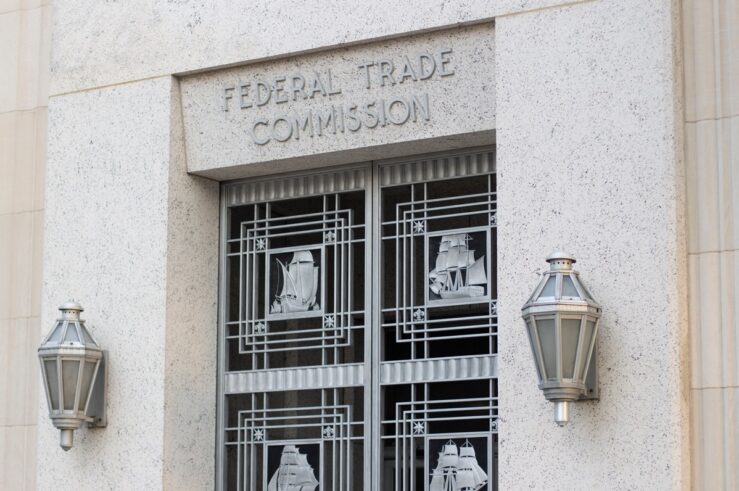
In the wake of its departure from the European Union, the United Kingdom will have the opportunity to enter into new free trade agreements (FTAs) with its international trading partners that lower existing tariff and non-tariff barriers. Achieving major welfare-enhancing reductions in trade restrictions will not be easy. Trade negotiations pose significant political sensitivities, such as those arising from the high levels of protection historically granted certain industry sectors, particularly agriculture.
Nevertheless, the political economy of protectionism suggests that, given deepening globalization and the sudden change in U.K. trade relations wrought by Brexit, the outlook for substantial liberalization of U.K. trade has become much brighter. Below, I address some of the key challenges facing U.K. trade negotiators as they seek welfare-enhancing improvements in trade relations and offer a proposal to deal with novel trade distortions in the least protectionist manner.
Two New Challenges Affecting Trade Liberalization
In addition to traditional trade issues, such as tariff levels and industry sector-specific details, U.K, trade negotiators—indeed, trade negotiators from all nations—will have to confront two relatively new and major challenges that are creating several frictions.
First, behind-the-border anticompetitive market distortions (ACMDs) have largely replaced tariffs as the preferred means of protection in many areas. As I explained in a previous post on this site (citing an article by trade-law scholar Shanker Singham and me), existing trade and competition law have not been designed to address the ACMD problem:
[I]nternational trade agreements simply do not reach a variety of anticompetitive welfare-reducing government measures that create de facto trade barriers by favoring domestic interests over foreign competitors. Moreover, many of these restraints are not in place to discriminate against foreign entities, but rather exist to promote certain favored firms. We dub these restrictions “anticompetitive market distortions” or “ACMDs,” in that they involve government actions that empower certain private interests to obtain or retain artificial competitive advantages over their rivals, be they foreign or domestic. ACMDs are often a manifestation of cronyism, by which politically-connected enterprises successfully pressure government to shield them from effective competition, to the detriment of overall economic growth and welfare. …
As we emphasize in our article, existing international trade rules have been able to reach ACMDs, which include: (1) governmental restraints that distort markets and lessen competition; and (2) anticompetitive private arrangements that are backed by government actions, have substantial effects on trade outside the jurisdiction that imposes the restrictions, and are not readily susceptible to domestic competition law challenge. Among the most pernicious ACMDs are those that artificially alter the cost-base as between competing firms. Such cost changes will have large and immediate effects on market shares, and therefore on international trade flows.
Second, in recent years, the trade remit has expanded to include “nontraditional” issues such as labor, the environment, and now climate change. These concerns have generated support for novel tariffs that could help promote protectionism and harmful trade distortions. As explained in a recent article by the Special Trade Commission advisory group (former senior trade and antitrust officials who have provided independent policy advice to the U.K. government):
[The rise of nontraditional trade issues] has renewed calls for border tax adjustments or dual tariffs on an ex-ante basis. This is in sharp tension with the W[orld Trade Organization’s] long-standing principle of technological neutrality, and focus on outcomes as opposed to discriminating on the basis of the manner of production of the product. The problem is that it is too easy to hide protectionist impulses into concerns about the manner of production, and once a different tariff applies, it will be very difficult to remove. The result will be to significantly damage the liberalisation process itself leading to severe harm to the global economy at a critical time as we recover from Covid-19. The potentially damaging effects of ex ante tariffs will be visited most significantly in developing countries.
Dealing with New Trade Challenges in the Least Protectionist Manner
A broad approach to U.K. trade liberalization that also addresses the two new trade challenges is advanced in a March 2 report by the U.K. government’s Trade and Agricultural Commission (TAC, an independent advisory agency established in 2020). Although addressed primarily to agricultural trade, the TAC report enunciates principles applicable to U.K. trade policy in general, considering the impact of ACMDs and nontraditional issues. Key aspects of the TAC report are summarized in an article by Shanker Singham (the scholar who organized and convened the Special Trade Commission and who also served as a TAC commissioner):
The heart of the TAC report’s import policy contains an innovative proposal that attempts to simultaneously promote a trade liberalising agenda in agriculture, while at the same time protecting the UK’s high standards in food production and ensuring the UK fully complies with WTO rules on animal and plant health, as well as technical regulations that apply to food trade.
This proposal includes a mechanism to deal with some of the most difficult issues in agricultural trade which relate to animal welfare, environment and labour rules. The heart of this mechanism is the potential for the application of a tariff in cases where an aggrieved party can show that a trading partner is violating agreed standards in an FTA.
The result of the mechanism is a tariff based on the scale of the distortion which operates like a trade remedy. The mechanism can also be used offensively where a country is preventing market access by the UK as a result of the market distortion, or defensively where a distortion in a foreign market leads to excess exports from that market. …
[T]he tariff would be calibrated to the scale of the distortion and would apply only to the product category in which the distortion is occurring. The advantage of this over a more conventional trade remedy is that it is based on cost as opposed to price and is designed to remove the effects of the distorting activity. It would not be applied on a retaliatory basis in other unrelated sectors.
In exchange for this mechanism, the UK commits to trade liberalisation and, within a reasonable timeframe, zero tariffs and zero quotas. This in turn will make the UK’s advocacy of higher standards in international organisations much more credible, another core TAC proposal.
The TAC report also notes that behind the border barriers and anti-competitive market distortions (“ACMDs”) have the capacity to damage UK exports and therefore suggests a similar mechanism or set of disciplines could be used offensively. Certainly, where the ACMD is being used to protect a particular domestic industry, using the ACMD mechanism to apply a tariff for the exports of that industry would help, but this may not apply where the purpose is protective, and the industry does not export much.
I would argue that in this case, it would be important to ensure that UK FTAs include disciplines on these ACMDs which if breached could lead to dispute settlement and the potential for retaliatory tariffs for sectors in the UK’s FTA partner that do export. This is certainly normal WTO-sanctioned practice, and could be used here to encourage compliance. It is clear from the experience in dealing with countries that engage in ACMDs for trade or competition advantage that unless there are robust disciplines, mere hortatory language would accomplish little or nothing.
But this sort of mechanism with its concomitant commitment to freer trade has much wider potential application than just UK agricultural trade policy. It could also be used to solve a number of long standing trade disputes such as the US-China dispute, and indeed the most vexed questions in trade involving environment and climate change in ways that do not undermine the international trading system itself.
This is because the mechanism is based on an ex post tariff as opposed to an ex ante one which contains within it the potential for protectionism, and is prone to abuse. Because the tariff is actually calibrated to the cost advantage which is secured as a result of the violation of agreed international standards, it is much more likely that it will be simply limited to removing this cost advantage as opposed to becoming a punitive measure that curbs ordinary trade flows.
It is precisely this type of problem solving and innovative thinking that the international trading system needs as it faces a range of challenges that threaten liberalisation itself and the hard-won gains of the post war GATT/WTO system itself. The TAC report represents UK leadership that has been sought after since the decision to leave the EU. It has much to commend it.
Assessment and Conclusion
Even when administered by committed free traders, real-world trade liberalization is an exercise in welfare optimization, subject to constraints imposed by the actions of organized interest groups expressed through the political process. The rise of new coalitions (such as organizations committed to specified environmental goals, including limiting global warming) and the proliferation of ADMCs further complicates the trade negotiation calculus.
Fortunately, recognizing the “reform moment” created by Brexit, free trade-oriented experts (in particular, the TAC, supported by the Special Trade Commission) have recommended that the United Kingdom pursue a bold move toward zero tariffs and quotas. Narrow exceptions to this policy would involve after-the-fact tariffications to offset (1) the distortive effects of ACMDs and (2) derogation from rules embodying nontraditional concerns, such as environmental commitments. Such tariffications would be limited and cost-based, and, as such, welfare-superior to ex ante tariffs calibrated to price.
While the details need to be worked out, the general outlines of this approach represent a thoughtful and commendable market-oriented effort to secure substantial U.K. trade liberalization, subject to unavoidable constraints. More generally, one would hope that other jurisdictions (including the United States) take favorable note of this development as they generate their own trade negotiation policies. Stay tuned.




